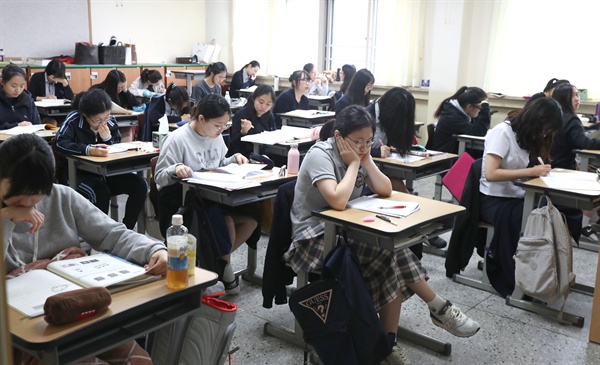SEOUL, Jan. 14 (Korea Bizwire) — 102 schools across the country made significant class innovation results by experimenting with a high school credit system last year, the education ministry said Monday.
The high school credit system is a system in which high school students choose classes according to their aptitudes and likely career path, similar to university students.
In addition to a number schools directly supported by the Ministry of Education, 252 schools were selected for the high school credit system operated by the municipal and provincial education offices last year.
Education authorities plan to expand the number of high school academic institutes to 128 and the number of leading schools to 600 this year.
A case in point is Macha High School in Yeongwol County, Gangwon Province, which has only 35 students.
The school ran a joint education course with a nearby high school, which is 30 minutes away by car, providing students with a variety of elective courses.
Through a joint education program held every Friday, students from the two schools were able to take various classes, ranging from Japanese and Chinese, to psychology, pedagogy and barista courses.
The government said that the “student-centered culture” spread at the high school credit system research school last year.
In addition to subjects such as Korean, English and math, a variety of subjects such as second languages, advanced subjects and liberal arts have been opened, expanding students’ choice of classes.
According to the Korea Institute for Curriculum and Evaluation, there were 19.6 percent more classes chosen by students and 37.3 percent more classes for specialized subjects compared to regular high schools last year.
At high school credit system research schools, changes in teaching and evaluation methods were also active, such as convergence classes, process-based evaluations, and learning communities.
D. M. Park (dmpark@koreabizwire.com)







